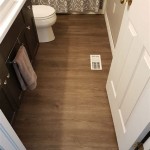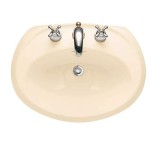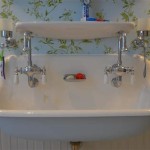How to Paint a Bathroom Vanity White and Black
Updating a bathroom vanity can dramatically transform the space without requiring a full-scale renovation. Painting a vanity white and black offers a timeless, sophisticated look that complements various bathroom styles. This article provides a comprehensive guide on how to achieve a professional-looking white and black paint finish on a bathroom vanity, covering preparation, painting techniques, and necessary materials.
Key Point 1: Preparing the Vanity for Painting
Proper preparation is paramount to ensuring a smooth, durable, and aesthetically pleasing paint job. This phase involves cleaning, sanding, and priming the vanity, creating an ideal surface for the paint to adhere to.
Step 1: Removing Hardware and Disassembling the Vanity
Begin by removing all hardware, including knobs, pulls, hinges, and door and drawer fronts if possible. This simplifies the painting process and prevents paint from accumulating on the hardware. Store the hardware in a labeled bag to avoid misplacement. If removing doors and drawers, label them with their corresponding locations to ensure proper reinstallation.
Step 2: Thorough Cleaning
Clean the vanity thoroughly to remove dirt, grime, grease, and any existing residue. Use a degreasing cleaner specifically formulated for kitchen and bathroom surfaces. Apply the cleaner according to the manufacturer's instructions and scrub the vanity with a non-abrasive sponge or cloth. Rinse thoroughly with clean water and allow the vanity to dry completely. A clean surface ensures proper paint adhesion.
Step 3: Sanding the Surface
Sanding creates a slightly rough surface that allows the primer and paint to bond effectively. Use sandpaper with a grit between 120 and 220, depending on the existing finish. If the vanity has a glossy finish, start with 120-grit sandpaper to break the surface and then progress to 220-grit for a smoother finish. For a pre-existing painted surface in good condition, 220-grit sandpaper may be sufficient. Sand in the direction of the wood grain, applying consistent pressure. After sanding, wipe down the vanity with a tack cloth to remove all sanding dust. This step is crucial for a flawless finish.
Step 4: Applying Primer
Primer creates a uniform surface for the paint, improves adhesion, and helps prevent bleed-through, especially when painting light colors over dark surfaces. Choose a high-quality primer specifically designed for wood or laminate surfaces, depending on the vanity's material. Apply the primer in thin, even coats using a brush, roller, or spray gun. Follow the manufacturer's instructions regarding drying time. Once the primer is dry, lightly sand it with fine-grit sandpaper (320-400 grit) to create an even smoother surface. Clean the surface again with a tack cloth before proceeding to the painting stage.
Key Point 2: Painting Techniques for a White and Black Vanity
Achieving a professional-looking white and black finish requires careful selection of paint types, application methods, and attention to detail.
Step 1: Selecting the Right Paint
Choose a high-quality paint formulated for cabinets and furniture. Acrylic latex or oil-based paints are suitable options. Acrylic latex paints are water-based, low in VOCs (volatile organic compounds), easy to clean up, and provide excellent durability. Oil-based paints offer a harder, more durable finish and are resistant to chipping and scratching, but they require mineral spirits for cleanup and have a stronger odor. Consider the sheen level, as well. Semi-gloss or satin finishes are common choices for bathroom vanities, as they are durable and easy to clean. Flat or matte finishes are generally not recommended for high-traffic areas like bathrooms.
Step 2: Applying the Base Coat (White)
For a white and black vanity, typically the larger surfaces are painted white, while details or accents are painted black. Apply the white paint in thin, even coats using a high-quality brush, roller, or spray gun. If using a brush, use a synthetic brush designed for latex or oil-based paints, depending on the chosen paint type. For rollers, use a foam roller with a smooth nap to minimize texture. Spraying provides the smoothest finish, but requires proper ventilation and masking. Apply multiple thin coats rather than one thick coat to avoid drips and runs. Allow each coat to dry completely according to the manufacturer's instructions before applying the next coat. Lightly sand between coats with fine-grit sandpaper (400 grit) to remove any imperfections and create a smoother surface for the next coat.
Step 3: Applying the Accent Color (Black)
Once the white base coat is completely dry, apply painter's tape to mask off the areas that will remain white. Ensure the tape is properly adhered to prevent paint bleed. Use a high-quality painter's tape designed for delicate surfaces to minimize the risk of damaging the white paint. Apply the black paint in thin, even coats using a brush, roller, or spray gun, depending on the desired finish and the complexity of the detail work. For intricate details, a small artist's brush may be necessary. Again, apply multiple thin coats, allowing each coat to dry completely before applying the next. Lightly sand between coats with fine-grit sandpaper (400 grit) if needed to remove any imperfections. After the final coat of black paint has dried completely, carefully remove the painter's tape at a 45-degree angle to prevent chipping the paint.
Step 4: Addressing Paint Bleed
Despite careful taping, some paint bleed may occur. Use a small artist's brush to carefully touch up any areas where the black paint has bled onto the white areas, or vice versa. Keep a damp cloth handy to wipe away any excess paint quickly.
Key Point 3: Finishing Touches and Reassembly
The final steps are crucial for protecting the painted surface and restoring the vanity to its functional state.
Step 1: Applying a Protective Topcoat (Optional)
Applying a clear topcoat provides an extra layer of protection against scratches, chips, and moisture. Choose a water-based polyurethane or acrylic topcoat formulated for furniture and cabinets. Apply the topcoat in thin, even coats using a brush, roller, or spray gun. Allow each coat to dry completely before applying the next, following the manufacturer's instructions. Lightly sand between coats with fine-grit sandpaper (400 grit) to create a smoother surface. A topcoat is especially recommended for high-use bathroom vanities.
Step 2: Reinstalling Hardware and Reassembling the Vanity
Once the paint and topcoat (if applied) are completely dry, reinstall the hardware and reassemble the vanity. Use the labeled bags to ensure the hardware is installed in the correct locations. If desired, replace the existing hardware with new hardware to further enhance the updated look of the vanity. When reinstalling doors and drawers, ensure they are properly aligned and functioning smoothly. Adjust hinges and drawer slides as needed.
Step 3: Final Inspection and Touch-Ups
Conduct a final inspection of the painted vanity, looking for any imperfections or areas that require touch-up. Use a small artist's brush to touch up any minor blemishes or scratches. Clean the vanity with a soft cloth and mild soap and water. Avoid using harsh chemicals or abrasive cleaners, as they can damage the painted surface.
Step 4: Curing Time
Allow the paint to fully cure before placing items on or in the vanity. Curing time varies depending on the type of paint used, but generally, it takes several days to a week for the paint to reach its maximum hardness and durability. Handle the vanity with care during the curing process to avoid scratches or dents.
By following these steps carefully, you can successfully paint a bathroom vanity white and black, creating a stylish and updated look for your bathroom that will last for years to come.

Bathroom Vanity Makeover Easy Diy Home Paint Project Mom Endeavors

Painting Bathroom Cabinets A Beginner S Guide Chrissy Marie Blog

Bathroom Vanity Makeover With Chalk Paint Decor Adventures

How To Paint A Bathroom Vanity Helpful Tips Calypso In The Country

21 Beautiful Painted Bathroom Cabinet Ideas
:strip_icc()/101922779-2cbc45e123c34827afb4f601723b03ca.jpg?strip=all)
How To Paint Bathroom Countertops

How To Paint Bathroom Vanity Cabinets Tutorial Benjamin Moore

The Best 20 Diy Navy Blue Gold Painted Vanity Bathroom Makeover

Dusk Painted Vanity Cabinetry Installed With Matte White Tops And Black Framed Bathroom Cabinets Mirror

An Easy And Beautiful Look With White Black Wall Paint
Related Posts







